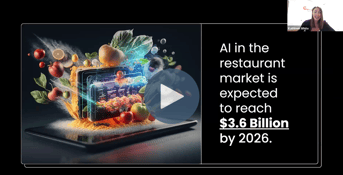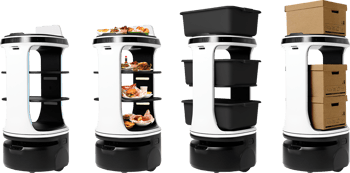As the tech landscape for restaurant operators continues to expand, so do the monthly software subscription payments. Every tool on the market seems to come with its own ROI (return on investment) calculator, promising boosted revenue and lower costs. And if a piece of tech can genuinely deliver value for your business, it’s worth exploring.
But the real question for modern restaurateurs is this: Should you build your restaurant tech stack with solutions from multiple vendors, or should you consolidate your tools using just a few providers — or even only one?
Your tech stack is the combination of all the restaurant technologies you use to run your business. Just about everyone uses a POS (point of sale) system like SpotOn, Square, or Toast. Some restaurants will add other restaurant technologies to their POS system, with systems for:
- Inventory management, like MarginEdge
- Employee scheduling, like 7Shifts
- Delivery apps, like ChowNow
Some restaurants prefer the control and flexibility that you get with a multi-vendor tech stack. Others prefer the simplicity of dealing with fewer companies. In this article, I’ll weigh the pros and cons of each approach to help you make the best choice for your restaurant’s needs.
A Multi-Vendor Approach
Building a restaurant tech stack by selecting multiple vendors can pay off in two key ways, with greater flexibility and access to specialized solutions. However, this approach can also create its own problems. You will need to juggle multiple software subscriptions.This can lead to what I call “vendor fatigue.”
The Advantages of a Multi-Vendor Approach
By choosing software platforms that focus on highly specialized functions, operators can take full advantage of a competitive market. This allows you to select the best possible solutions for your specific needs.
Heightened Innovation
Specialized providers often face steeper competition than all-in-one tech providers, so there’s a lot of pressure on them to evolve as industry demands change. These niche providers are a lot more likely to prioritize innovation to ensure their own survival.
This means that, as a customer, working with specialty restaurant tech providers gets you access to best-in-class solutions, as well as the opportunity to stay ahead of the curve.
Reduced Operational Disruption
A multi-vendor strategy is particularly useful for restaurants dealing with legacy systems, such as an aging POS. Replacing these systems completely can be costly and disruptive. By keeping the current POS and adding on other, more modern, software solutions, you can get innovative features to extend the life of your older systems while avoiding a full system overhaul.
Robust Customer Support
Additionally, specialized restaurant tech vendors often provide dedicated support and expertise. With their sole focus on one product, each company is better equipped to offer tailored guidance to address complex issues. This can enhance the user experience and lead to better outcomes.
The Drawbacks of a Multi-Vendor Approach
While a multi-vendor approach has advantages, the drawbacks cannot be ignored.
Vendor Fatigue
Vendor fatigue is a common challenge. Dealing with too many vendors can create a real administrative burden for operators and staff. Managing multiple restaurant tech solutions requires additional time, effort, and training — resources that are already stretched thin in many restaurants.
Operational Complexity
Operationally, relying on multiple restaurant tech vendors can complicate how you plan for emergencies like the Wi-Fi going down. Smart operators develop procedures for responding to software interruptions, but you may find it overwhelming to create and maintain a separate plan for each vendor.
Inefficient Cost Management
There’s also the financial strain to consider. Much like organizing an event where every detail involves an extra cost, the cumulative fees for individual software subscriptions can quickly add up to be more than the cost of a consolidated solution.
Without careful management, overlapping features and redundancies across tools can cause weary restaurant operators to become fatigued. No one wants to pay twice for the same service.
Consolidation
The opposite strategy would be to consolidate your software needs using a single platform or a small set of integrated tools. A growing number of POS systems are designed to provide all of your tech stack needs through a single vendor.
The Advantages of Consolidation
This all-in-one approach is usually simpler and more efficient. It can also be more cost-effective.
Streamlined Operation
Consolidating restaurant technologies will simplify your operation. You’ll have fewer logins, passwords, and dashboards. This streamlines things for both staff and owners. This means everybody on your team can access ordering systems, payment processing, inventory management, shift scheduling information, and more — all using a single application.
Lower Tech Costs
Bundling a bunch of different restaurant technologies with a single vendor is more affordable than assembling your tech stack piecemeal. In some cases, you may have to pay an additional fee to your tech provider in order to add certain features.
For example, inventory management may not automatically be included with your POS system, but it may be available at an added cost. Even with these added costs, you will usually pay less for the all-in-one approach.

Download the Free POS Guide
Find the best POS system for your restaurant with this expert-vetted guide.
*Submitting this form will also subscribe you to our weekly newsletter. Unsubscribe at any time.
Data-Driven Cost Reductions
An all-in-one approach can also help you reduce costs in other areas. Consolidation means that all of your solutions are seamlessly integrated. Your POS platform, inventory management tools, staff scheduling solutions, and payroll processing systems are all talking to each other, and passing data to one another in real-time.
All-in-one systems make it easy to understand and use your data for smarter decision-making when staffing shifts, pricing menu items, placing inventory orders, and more.
Reduced Long-Term Costs
A consolidated approach also helps reduce the ongoing costs of maintaining aging restaurant technologies that no longer operate at full capacity but are still critical to the business. Consolidated platforms are typically updated regularly, ensuring tools stay current with industry standards without requiring significant reinvestment.
The Drawbacks of Consolidation
Consolidation does come with a few drawbacks.
Simplicity Over Quality
When you go with the all-in-one provider, you may be getting simplicity and function, but sacrificing quality and innovation. The original, base function of a particular restaurant tech platform may be a market leader, but in some cases, the add-on features may be less sophisticated than those offered by specialty vendors.
For instance, a POS provider’s staffing solution may not work as well (or do as much) as a staffing solution built by a company that specializes in scheduling, payroll, and HR functions.
Vendor Lock-In
It can be a lot harder to switch platforms if you’re not happy with your all-in-one provider. This is called “vendor lock-in.” What happens when you want to switch a function or add a piece of software? When you’re using a consolidated system, you might have to make a wholesale change to your entire system to get the new functions you want. Obviously, this can be extremely costly and disruptive.
A Real-World Example: Bundling POS and Inventory Management Tools
Let’s consider a restaurant operator that is currently using one POS system to track sales and a separate inventory management tool to manage food costs. Some restaurant tech providers offer these tools as a bundled package, combining two essential systems into one streamlined solution.
The Pros of This Bundled Approach
- Simplified support – You only need to contact one support team for help with both the POS and inventory management software, saving time and reducing frustration.
- One invoice and payment – Using one vendor for both tools simplifies billing and consolidates payments into a single monthly fee.
- Seamless integration – Bundled solutions are often designed to work together, ensuring that sales data flows directly into inventory tracking for real-time insights and accuracy.
The Cons of This Bundled Approach
- Bundled pricing – The convenience of bundling can come at a cost, as pricing for one tool may be tied to the other, leaving little room for flexibility or negotiation.
- Limited vendor options – Choosing a bundled solution means you are committed to the provider for both tools, reducing the ability to shop around for alternatives that might better fit your specific needs or budget.
- Focus spread across functions – A vendor offering both POS and inventory solutions may not specialize in one of these areas, potentially leading to a system that isn’t as robust as a specialized provider’s tool.
- Distinct system needs – While integration is valuable, POS and inventory management are fundamentally different functions. Some restaurants may prefer standalone systems that excel individually rather than a package designed for convenience.
Weighing Your Options
When building or revamping your restaurant's tech stack, it’s essential to weigh the trade-offs between the multi-vendor approach and consolidation. Neither approach is right for everyone. The right choice depends on your restaurant’s style, management preferences, and operational goals.
The best decision for your restaurant will depend on your business needs, budget, and growth plans. But no matter what your outlook is, restaurant technologies are evolving rapidly, and staying proactive about evaluating and updating your tools is key to long-term success.
Need help sorting out your options? Schedule a consultation with me or another Back of House expert. We’re here to help!





